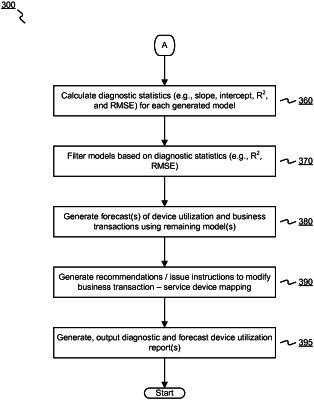| CPC G06F 11/3442 (2013.01) [G06F 11/3452 (2013.01); G06Q 10/067 (2013.01)] | 20 Claims |

|
1. A computer-implemented method comprising:
generating statistical models indicative of correlations between aggregated interaction data for a plurality of interaction types and aggregated resource utilization data for a plurality of devices respectively mapped to the interaction types, the interaction types comprising a mobile-device interaction type and a non-mobile-device interaction type, the statistical models comprising a first model and a second model;
for each model of the statistical models, scoring the model for one or more interaction types based on respective levels of the correlations (i) indicated by the model and (ii) related to resource type usages of the one or more interaction types; and
remapping the devices and the interaction types based on the scoring of the statistical models by:
(i) using the first model to remap one or more first devices having a first resource type to the mobile-device interaction type based on the first model indicating a high level of correlation between the mobile-device interaction type and the first resource type; and
(ii) using the second model to remap one or more second devices having a second resource type to the non-mobile-device interaction type based on the second model indicating a high level of correlation between the non-mobile-device interaction type and the second resource type, the second resource type being different from the first resource type.
|